This Day in Rock History - Oct. 25th
 1960: On this day, 17-year-old art student Keith Richards bumps into an old school chum at a London train station. His friend, Mick Jagger is carrying a batch of R&B albums under his arm. Deciding to renew their friendship (and listen to the albums) the two will soon form their first group: Little Boy Blue and the Blue Boys.
1960: On this day, 17-year-old art student Keith Richards bumps into an old school chum at a London train station. His friend, Mick Jagger is carrying a batch of R&B albums under his arm. Deciding to renew their friendship (and listen to the albums) the two will soon form their first group: Little Boy Blue and the Blue Boys.
This Day in Rock History - Oct. 24th
 1964: One of the most historic concerts ever took place on this day. The Teenage Music International Show (later known as TAMI) went on stage at California Civic Center in Santa Barbara. Look at this line-up: Chuck Berry, The Beach Boys, The Rolling Stones, James Brown, The Supremes, Marvin Gaye, Smokey Robinson & the Miracles, Jan & Dean, Lesley Gore, Gerry & the Pacemakers, and Billy J. Kramer!
1964: One of the most historic concerts ever took place on this day. The Teenage Music International Show (later known as TAMI) went on stage at California Civic Center in Santa Barbara. Look at this line-up: Chuck Berry, The Beach Boys, The Rolling Stones, James Brown, The Supremes, Marvin Gaye, Smokey Robinson & the Miracles, Jan & Dean, Lesley Gore, Gerry & the Pacemakers, and Billy J. Kramer!
Even more incredible, the tickets for the show were FREE – distributed to local area school kids. The event was shown on a closed circuit basis at movie theaters around the country.
This Day in Rock History - Oct. 23rd
 1977: For some unfathomable reason, on this day the city of San Francisco banned electric instruments from all free outdoor concerts. In response, Jefferson Starship cancels an upcoming free concert in Golden Gate Park.
1977: For some unfathomable reason, on this day the city of San Francisco banned electric instruments from all free outdoor concerts. In response, Jefferson Starship cancels an upcoming free concert in Golden Gate Park.
A few years later, Bernie Taupin, Martin Page, Dennis Lambert, and Peter Wolf write "We Built This City" for the band (now calling itself just Starship) about this event. The song goes on to win a 2011 Rolling Stone Readers’ Poll as “The Worst Song of the 1980s.”
This Day in Rock History - Oct. 22nd

 A tale of 2 classic albums...
A tale of 2 classic albums...
1964: The Beatles Second Album (actually, a totally American creation of Capitol Records assembled from various singles, EPs and left-over tracks from the British album With the Beatles) reaches #1 on the U.S. album charts.
1967: The Monkees release their third album, Headquarters, the first to be completed under the Monkees’ own direction,. Tired of being relegated to simply adding vocals to tracks created by session musicians, Michael Nesmith led a successful rebellion to gain more input and creative control of Monkees recordings
Back When Everything Really Was Archie
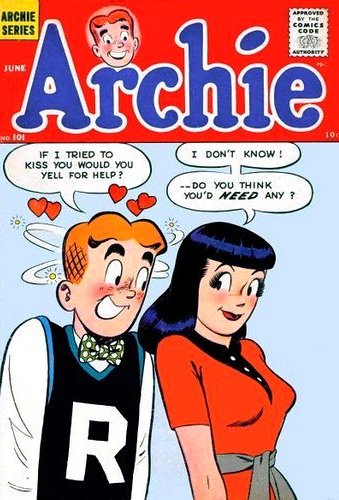 The True and (Mostly) Untold Story of America’s #1 Teenager
The True and (Mostly) Untold Story of America’s #1 Teenager
In the days before cable TV, DVDs, and video games, no summer vacation was complete without at least one afternoon (and probably many more) spent leisurely going through a stack of Archie Comics. Yes, they were just fictional characters, but in those days it seemed like Archie, Betty, Veronica, Jughead, Reggie and the rest were as close to us as the actual kids we went to school with.
His misadventures have been entertaining people for nearly eight decades now, but few know the real story behind the creation of this cultural icon.
While talented cartoonist Bob Montana is most often credited with creating Archie Andrews and the gang at Riverdale High (more on that in just a bit), few know that the real inspiration for Archie was actually Mickey Rooney. Rooney had starred as America’s first typical teenager: Andy Hardy in a series of extremely successful M-G-M movies in the late 1930’s and early 1940’s.
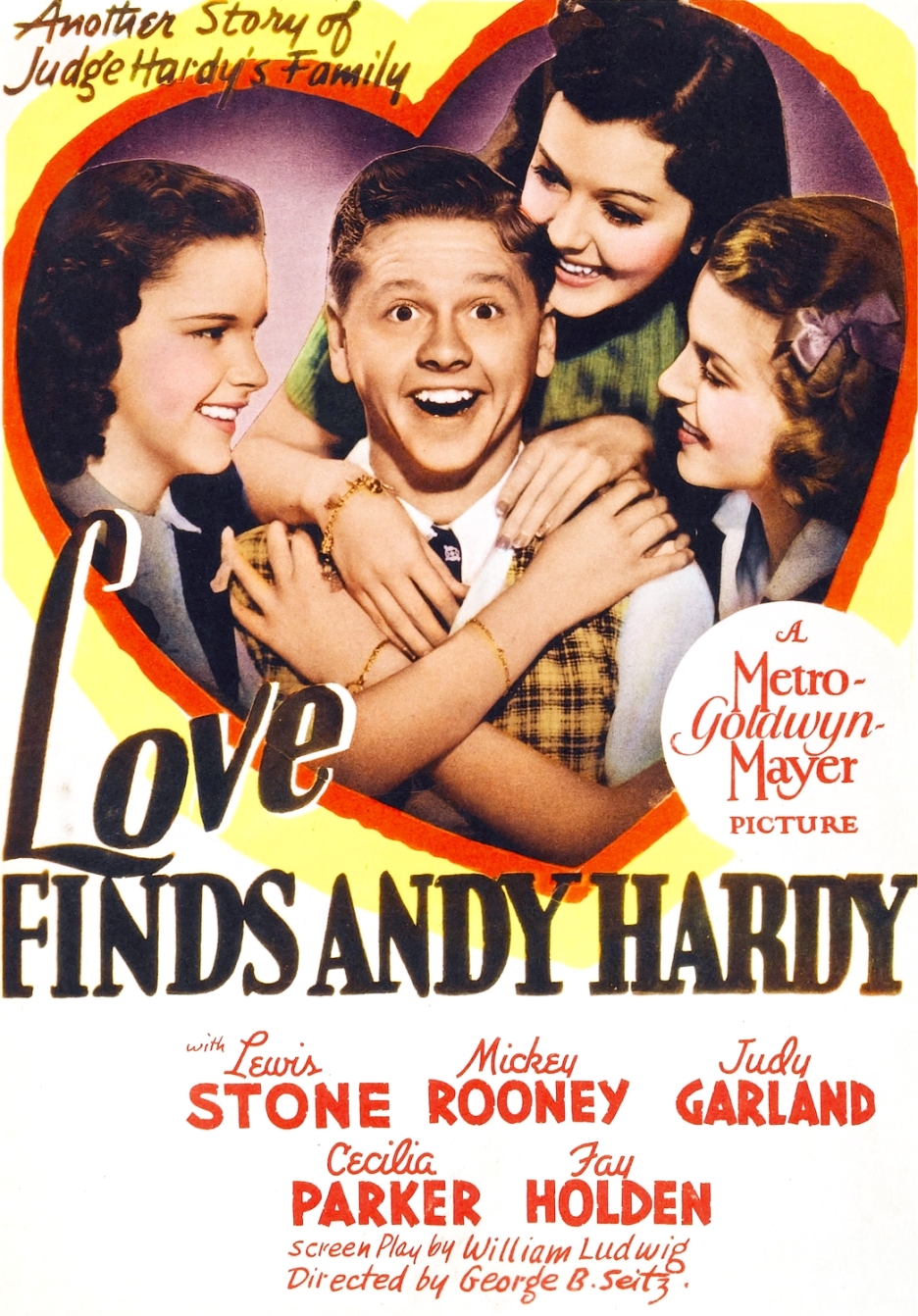
As mentioned above, Archie’s “parentage” has been a matter of some controversy for years. In addition to Montana, two other people also had a hand in creating one of the most successful pop culture icons of the 20th Century. Comic book publisher John Goldwater claimed the idea to do a strip based on the Andy Hardy films came from him. In addition, journeyman comic book scripter Vic Bloom deserves a nod as the actual writer of the very first Archie comic book story.
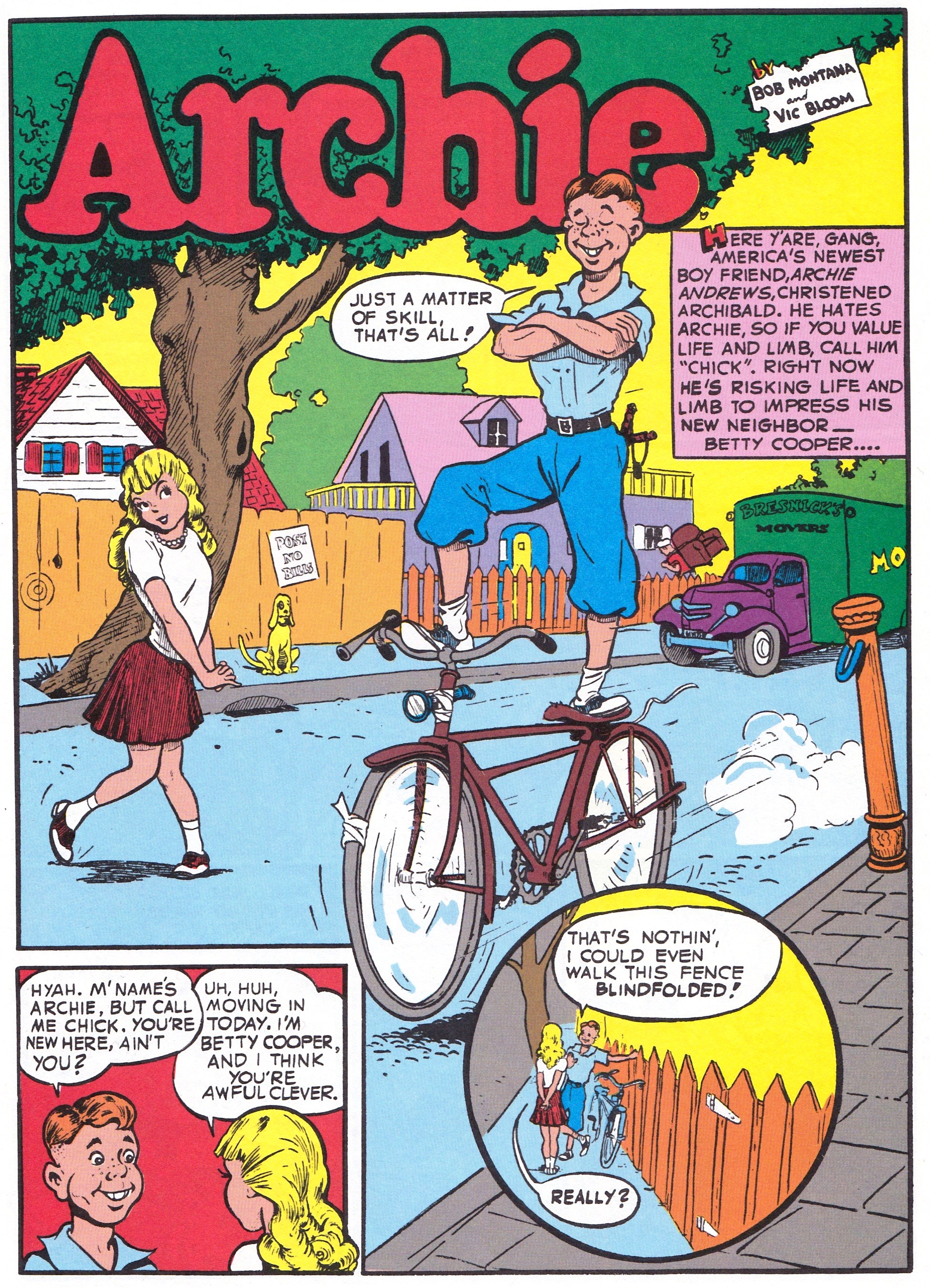 It’s doubtful any of these guys knew what a sensation Archie would be when the freckle-faced teen made his debut in Pep Comics # 22, published in the fall of 1941. That book was mainly concerned with the exploits of various super-heroes, then as now, the glamour boys of the comics industry. Archie was a simple 6-page back-up feature, buried way back on page 49 of that particular issue.
It’s doubtful any of these guys knew what a sensation Archie would be when the freckle-faced teen made his debut in Pep Comics # 22, published in the fall of 1941. That book was mainly concerned with the exploits of various super-heroes, then as now, the glamour boys of the comics industry. Archie was a simple 6-page back-up feature, buried way back on page 49 of that particular issue.
Nonetheless, readers quickly made Archie the most popular feature in the magazine. By the winter of 1942, Archie received his own comic book and has been the mainstay of the company ever since.
As you can see from the title page of his very first story, our hero initially didn’t even want to be called “Archie,” preferring the nickname “Chick” Betty was right there with him from the start, moving into Archie’s neighborhood in that first story. Jughead also appears in that first story. But the rest of cast would take some time to get on stage. Veronica moved to Riverdale in Pep Comics # 26. Reggie Mantle, Moose Mason, Pop Tate and the rest would follow.
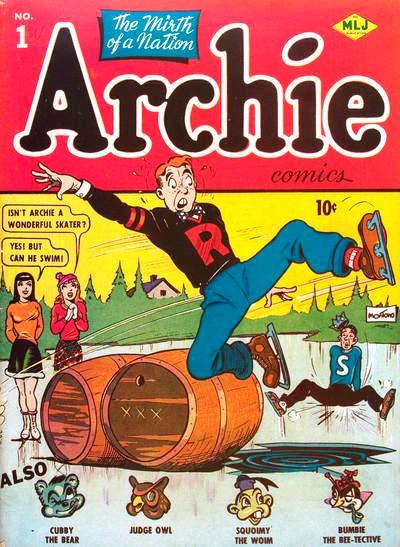
No matter who created Archie, it is Montana who is most associated with the character. He drew the daily Archie newspaper comic strip from its inception in 1946 until Montana’s passing in 1975.
 Montana claimed that most of the characters we all loved were modeled on people he knew during his youth in Massachusetts. He said he based Jughead and Moose on his friends Skinny Linehan and Arnold Daggett. Miss Grundy was inspired by his school librarian Elizabeth Tuck. Betty Cooper was modeled on Montana’s girlfriend in New York and her arch-rival Veronica Lodge was created by combining then-popular movie star Veronica Lake with Boston’s top political family of the day, the Lodges (who gave us Henry Cabot Lodge).
Montana claimed that most of the characters we all loved were modeled on people he knew during his youth in Massachusetts. He said he based Jughead and Moose on his friends Skinny Linehan and Arnold Daggett. Miss Grundy was inspired by his school librarian Elizabeth Tuck. Betty Cooper was modeled on Montana’s girlfriend in New York and her arch-rival Veronica Lodge was created by combining then-popular movie star Veronica Lake with Boston’s top political family of the day, the Lodges (who gave us Henry Cabot Lodge).
Archie’s runaway success has translated well across all media. There was a long-running radio series in the 1940’s as well as several popular cartoon series beginning in the late 1960’s (admit it, you’re humming “Sugar, Sugar” as you read this).
There was even a made-for-TV movie To Riverdale and Back Again (released on home video with the title Return to Riverdale) in 1990, but live action success in either the movies or as a TV series has eluded Mr. Andrews. Not for lack of trying. There have been pilots for a live action series and various attempts to bring Archie, Jughead, Betty and Veronica to the big screen.
How many of the titles do you remember and who was your favorite character(s)? We were always rooting for Betty, although Archie definitely seemed to prefer Veronica (despite the fact that, outside of their hair, both girls were drawn exactly alike). Perhaps there’s a message in that!
This Day in Rock History - Oct. 21st
 1960: On this day testifying before Congress, America’s perennial teenager, Dick Clark admits he took “payola” (money and/or gifts) to play certain records. Because he owns up to it and agrees to sell off his interests in certain records and record companies, he is allowed to stay on as host of American Bandstand.
1960: On this day testifying before Congress, America’s perennial teenager, Dick Clark admits he took “payola” (money and/or gifts) to play certain records. Because he owns up to it and agrees to sell off his interests in certain records and record companies, he is allowed to stay on as host of American Bandstand.
Unlike pioneering rock ‘n’ roll DJ Alan Freed, who never admits taking payola (although all evidence clearly indicates that he did) and is driven from the airwaves.
This Day in Rock History - Oct. 20th
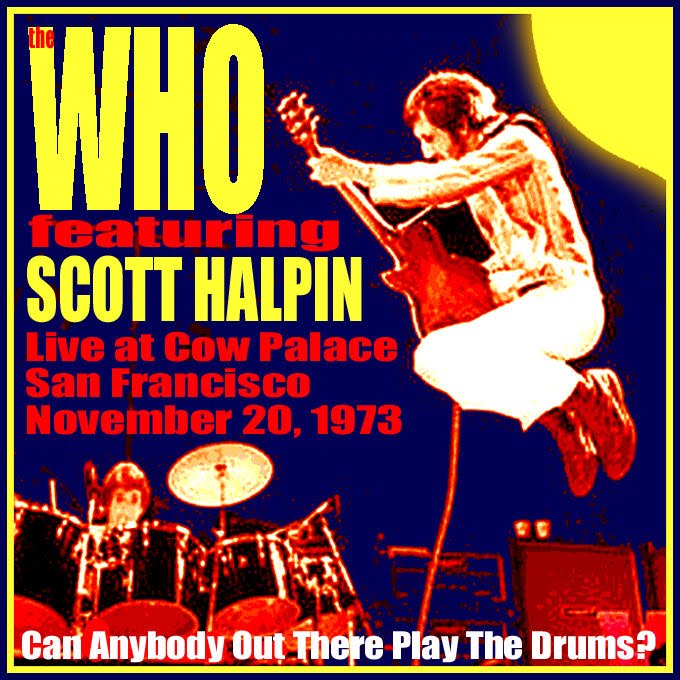 1973: A rock ‘n’ roll dream came true on this day when 19-year-old Scot Halpin is invited onstage on The Who concert at San Francisco's Cow Palace to play the drums for the band’s last three songs of the show.
1973: A rock ‘n’ roll dream came true on this day when 19-year-old Scot Halpin is invited onstage on The Who concert at San Francisco's Cow Palace to play the drums for the band’s last three songs of the show.
It seems drummer Keith Moon had apparently ingested seven horse tranquilizers prior to the gig and was unable to finish the set (surprise, surprise). Halpin fills in on "Smokestack Lightning," "Spoonful," and "Naked Eye," also taking a final bow onstage with his idols at the close of the concert.
A few months later, Rolling Stone awards Halpin their "Pick-Up Player of the Year Award."
This Day in Rock History - Nov. 19th
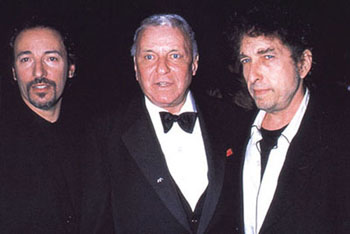
1995: Are you going to the after party?
On this day, after performing at an all-star 80th birthday tribute to Frank Sinatra at the Shrine Auditorium in Los Angeles, Bruce Springsteen and Bob Dylan are invited back to the crooner’s home for a private celebration.
Neither mentions the fact that the Chairman of the Board once called rock ‘n’ roll artists “cretinous goons” and the music itself, “brutal, ugly, degenerate, vicious.” (Of course it was, Frank, why do you think we were listening to it?)
This Day in Rock History - Oct. 18th
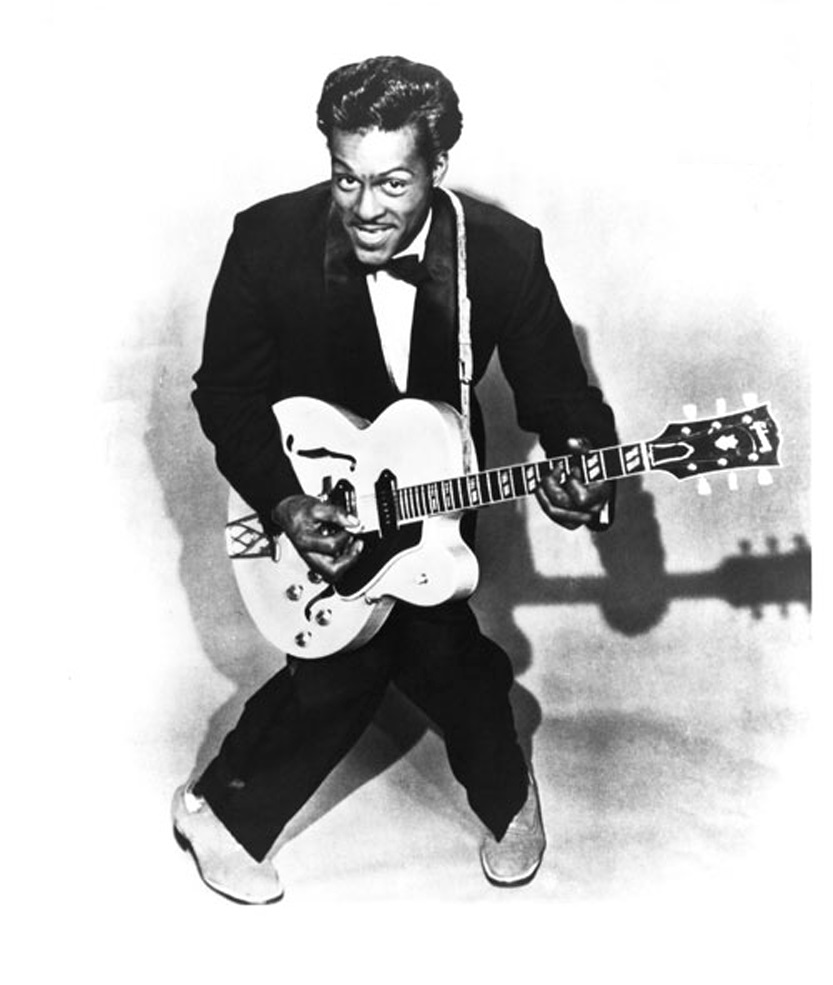 1926: Happy Birthday to the man who contributed more to the founding of rock ‘n’ roll than perhaps any other artist: Chuck Berry would have been 97 today. Make sure and tell Tchaikovsky the news.
1926: Happy Birthday to the man who contributed more to the founding of rock ‘n’ roll than perhaps any other artist: Chuck Berry would have been 97 today. Make sure and tell Tchaikovsky the news.
This Day in Rock History - Oct. 17th
 1957: On this day Elvis Presley’s third film (and some say, his best film) Jailhouse Rock has its world premiere at the Loews State Theatre in Memphis. It’s the exact same movie theater where Elvis worked as an usher just five years earlier.
1957: On this day Elvis Presley’s third film (and some say, his best film) Jailhouse Rock has its world premiere at the Loews State Theatre in Memphis. It’s the exact same movie theater where Elvis worked as an usher just five years earlier.
Pop Up Player
Latest Posts–Financial Info
-
Quick Ways to Score Extra Cash
Even in today’s economy, everybody is looking for ways to expand their income. We have three ways that might do the trick. Cash in Your Gift Cards – Have unused gift cards? You can sell…
-
Fast & Free Will
Did you know a will dosn't have to be a long, complicated process? And you defintely should have one! Dying without one can leave your estate in chaos. The internet comes to rescure again. You…
-
Making Home Renovations Pay
Fixing up your home? You might want to tell your insurance company about it. 8 of the 10 largest home insurers offer little-publicized discounts for certain renovations or upgrades. Go to BankRate.com and type in…
-
Why Use Credit Cards, Not Debit Cards
Because credit cards give you more protection should your card number be stolen. Most credit card companies have a limit on how much your account may be charged in the event of false charges. In…
-
Before You Rent a Self-Storage Unit
The rapid growth of self-storage facilities across the United States is a testimony to Americans having more stuff than they know what to do with. Before you rent a unit for your excess stuff,read this:…
-
Older Workers Wanted!
Ever been worried you might lose your job because you were getting too old? Relax. Many employers are now looking specifically at hiring and retaining workers over the age of 60. Why? Because of their…


